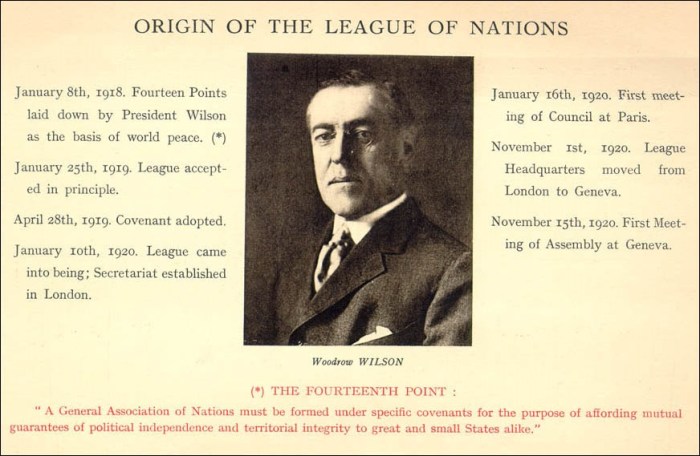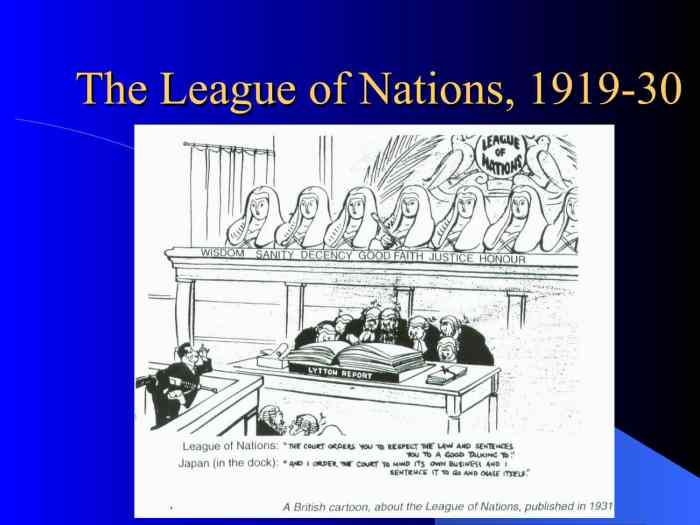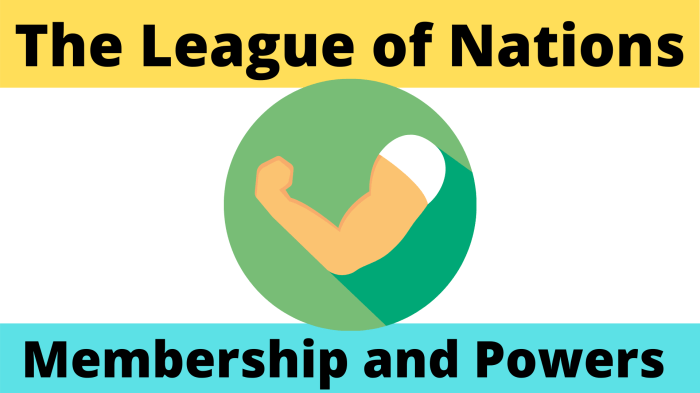The League of Nations Worksheet Answer Key provides a comprehensive overview of the League of Nations, its successes, failures, and lasting legacy. This key resource delves into the organization’s origins, structure, key events, achievements, challenges, and the lessons learned from its experience that remain relevant today.
The League of Nations emerged as a visionary concept after the devastation of World War I, aiming to prevent future conflicts and promote international cooperation. The League faced numerous challenges, including the lack of enforcement powers and the rise of nationalism, but it also achieved notable successes in areas such as dispute resolution and humanitarian aid.
Overview of the League of Nations

The League of Nations was an international organization established after World War I to promote peace, prevent future conflicts, and foster international cooperation. It was founded on January 10, 1920, with its headquarters in Geneva, Switzerland.
The League’s membership grew to include 63 nations, representing a majority of the world’s population. Its structure consisted of an Assembly, a Council, and a Secretariat. The Assembly was composed of representatives from all member states, while the Council was a smaller body that included permanent members (initially the United States, Great Britain, France, Italy, and Japan) and non-permanent members elected by the Assembly.
Key events in the League’s history include:
- 1920:Establishment of the League of Nations
- 1924:Adoption of the Geneva Protocol, which aimed to strengthen the League’s ability to resolve disputes
- 1925:Locarno Treaties, which aimed to resolve tensions between France and Germany
- 1931:Manchurian Crisis, which exposed the League’s inability to prevent aggression
- 1933:Withdrawal of Germany and Japan from the League
- 1939:Outbreak of World War II, which effectively ended the League’s effectiveness
- 1946:Dissolution of the League of Nations
The League’s Successes

Despite its ultimate failure to prevent World War II, the League of Nations had some notable successes.
Dispute Resolution, The league of nations worksheet answer key
The League played a role in resolving several international disputes, including the Åland Islands dispute between Finland and Sweden, the Mosul dispute between Turkey and Iraq, and the Chaco War between Bolivia and Paraguay.
International Cooperation
The League established numerous international organizations, including the International Labour Organization, the Permanent Court of International Justice, and the Health Organization. These organizations continued to operate after the League’s dissolution.
Humanitarian Aid
The League provided humanitarian aid to refugees and victims of war and natural disasters. It also established the Nansen International Office for Refugees, which provided passports and other assistance to displaced persons.
Factors contributing to the League’s successes included its broad membership, which gave it legitimacy and a global reach; its commitment to international cooperation; and the expertise of its staff.
The League’s Failures
The League of Nations faced numerous challenges and failures.
Lack of Enforcement Powers
The League lacked the authority to enforce its decisions. This was a major weakness that made it difficult to prevent or resolve conflicts.
National Self-Interest
Member states often prioritized their own national interests over the goals of the League. This made it difficult to achieve consensus on important issues.
Changing Global Dynamics
The rise of fascism and nationalism in the 1930s undermined the League’s commitment to international cooperation. The outbreak of World War II effectively ended the League’s effectiveness.
The League’s failures had a significant impact on its legacy. It exposed the challenges of maintaining international peace and cooperation in a world of competing national interests.
The League’s Legacy: The League Of Nations Worksheet Answer Key

The League of Nations had a lasting impact on the development of international organizations.
The United Nations, established after World War II, was modeled in part on the League of Nations. The UN has a broader mandate than the League, including the promotion of human rights and economic development.
The League’s experience also taught valuable lessons about the challenges of maintaining international peace and cooperation. These lessons continue to inform the work of international organizations today.
FAQ Corner
What were the major successes of the League of Nations?
The League played a significant role in resolving international disputes, providing humanitarian aid, and promoting international cooperation in areas such as health and labor.
What were the reasons behind the League’s failures?
The League lacked enforcement powers, faced challenges due to national self-interest, and struggled to adapt to changing global dynamics, including the rise of fascism and the outbreak of World War II.
What are the lessons learned from the League’s experience that are still relevant today?
The League’s legacy highlights the importance of international cooperation, the need for effective enforcement mechanisms, and the challenges of balancing national interests with global responsibilities.